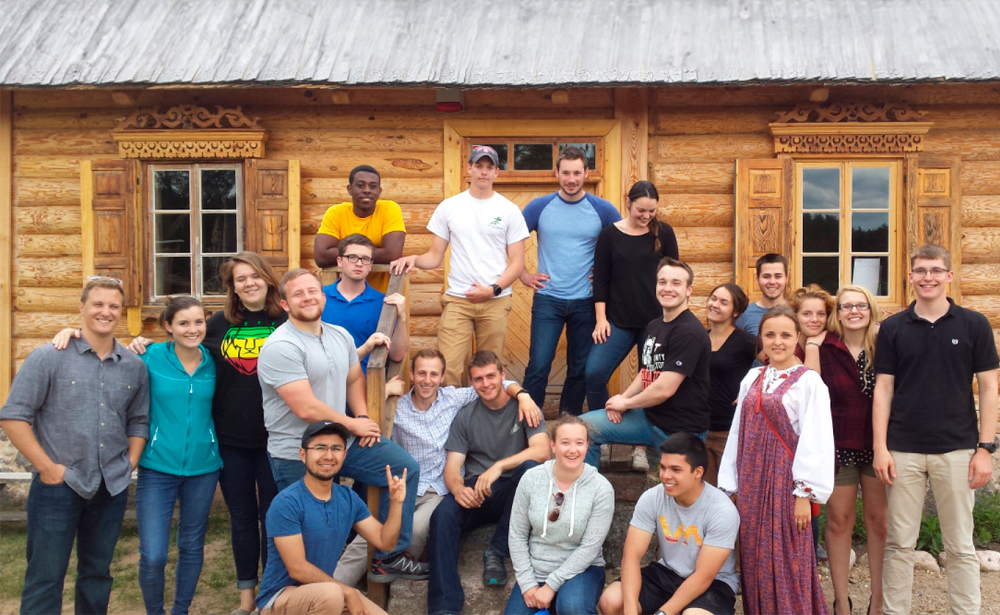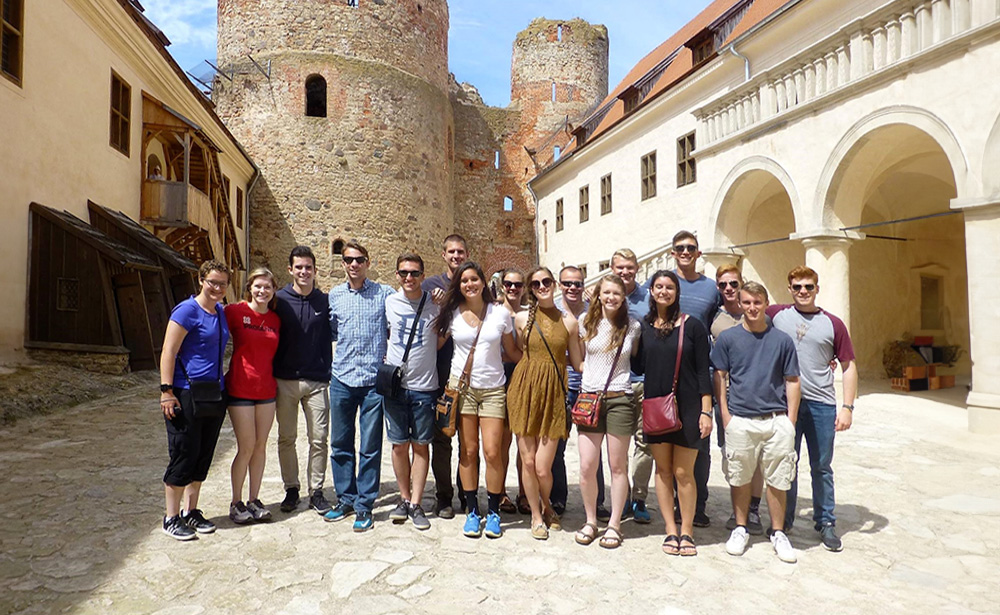Ded Moroz (Grandfather Frost)
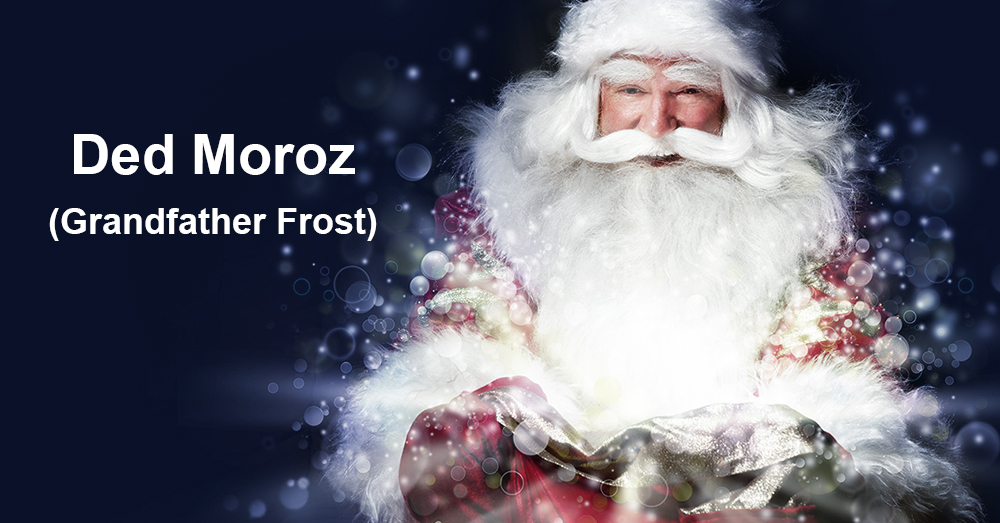
Ded Moroz (Father Frost, or Grandfather Frost) is the key character of the New Year in Russia. He wears a long red fur coat embroidered with traditional ornaments, a red hat embroidered with pearls, white mittens and valenki.
Ded Moroz lives in Velikiy Ustyug in Vologda oblast. Since 1999 Velikiy Ustyug is a tourist business project where people from Russia and other countries come. Ded Moroz’s estate is located in the forest, 11 kilometres away from the city, and this place was recognized as Ded Moroz’s birthplace for its rich history, beautiful architecture, and the beauty of its nature.
You can always recognize Russian Ded Moroz because of his thick and long white beard, red nose and rosy cheeks. He always leans on his pikestaff, and he carries a bag with gifts. Ded Moroz is always accompanied by his granddaughter Snegurochka (Snow Maiden) who helps him to play with kids. They travel from one city to another, give gifts to good kids and ignore the bad ones.
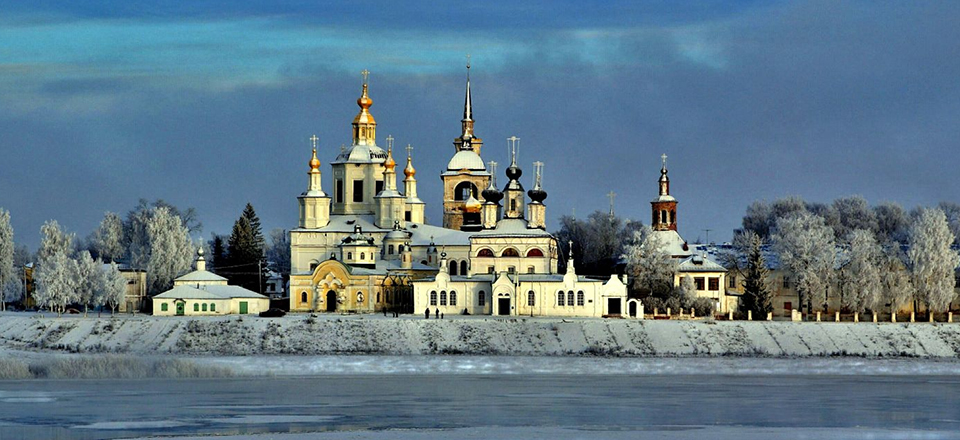
Despite a few similar details, such as a snow-white beard, clothes and handing out gifts, Ded Moroz accompanied by Snegurochka in Russia and Santa Claus with his assistants-dwarfs in the West are two completely different characters.
A modern Russian Ded Moroz originates from a more ancient Morozko or Moroz krasnyy nos (Frost Red Nose) who were characters in Russian fairy-tales.
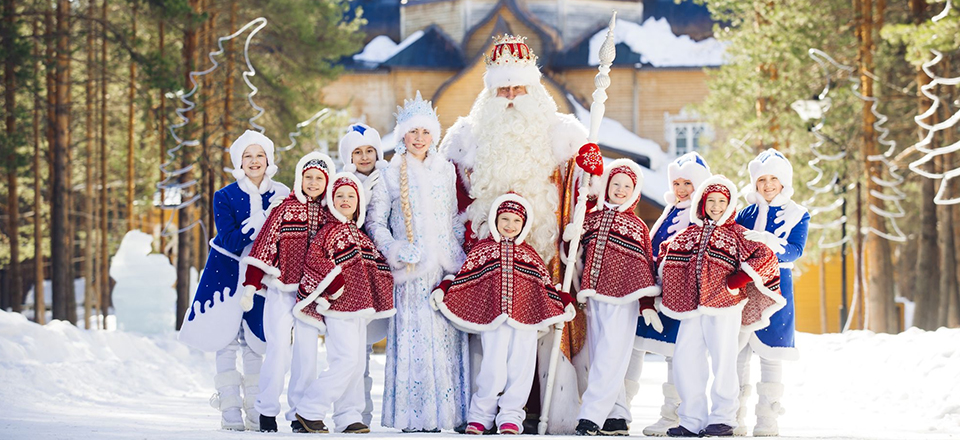
In Russian fairy-tales Ded Moroz represents a strict but fair spirit of winter. For example, in a popular fairy-tale “Morozko”, Mozoko gave gifts to a kind and hard-working girl, although he froze to death a mean girl. Therefore, even today in many northern countries there is a custom to appease Ded Moroz at Christmas and try not to make him angry.
Here, there are a few congratulations people usually say at Christmas. In Russia, people celebrate Christmas according to the Julian calendar on January 6-7. So, if you are going to celebrate Christmas with your Russian friends, you should know what to say to each other.
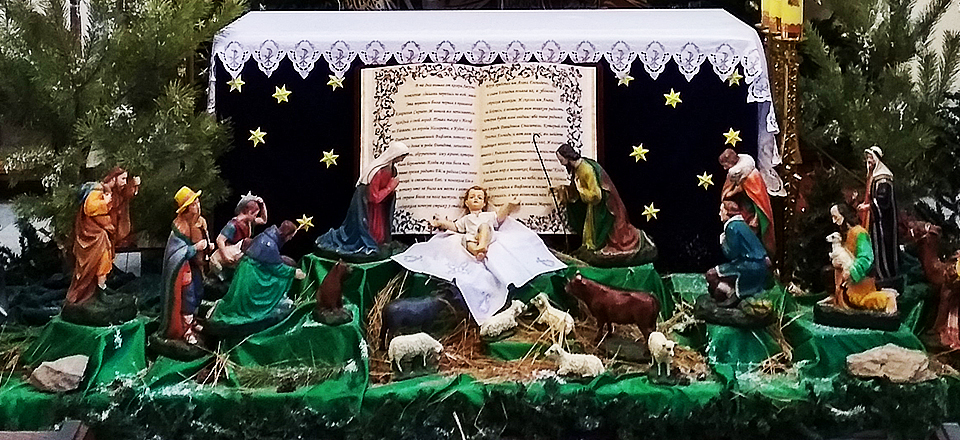
Traditional words are: “S rozhdyestvom Hristovym!” (“Congratulations on the birth of Christ!”).
You can also say: “S prazdnikom!” (“Happy holiday!”) or “Schastlivogo Rozhdestva!” (“Merry Christmas!”).
After having read this article you now know some facts about Russian Ded Moroz, and how to congratulate people at Christmas.

You may be interested
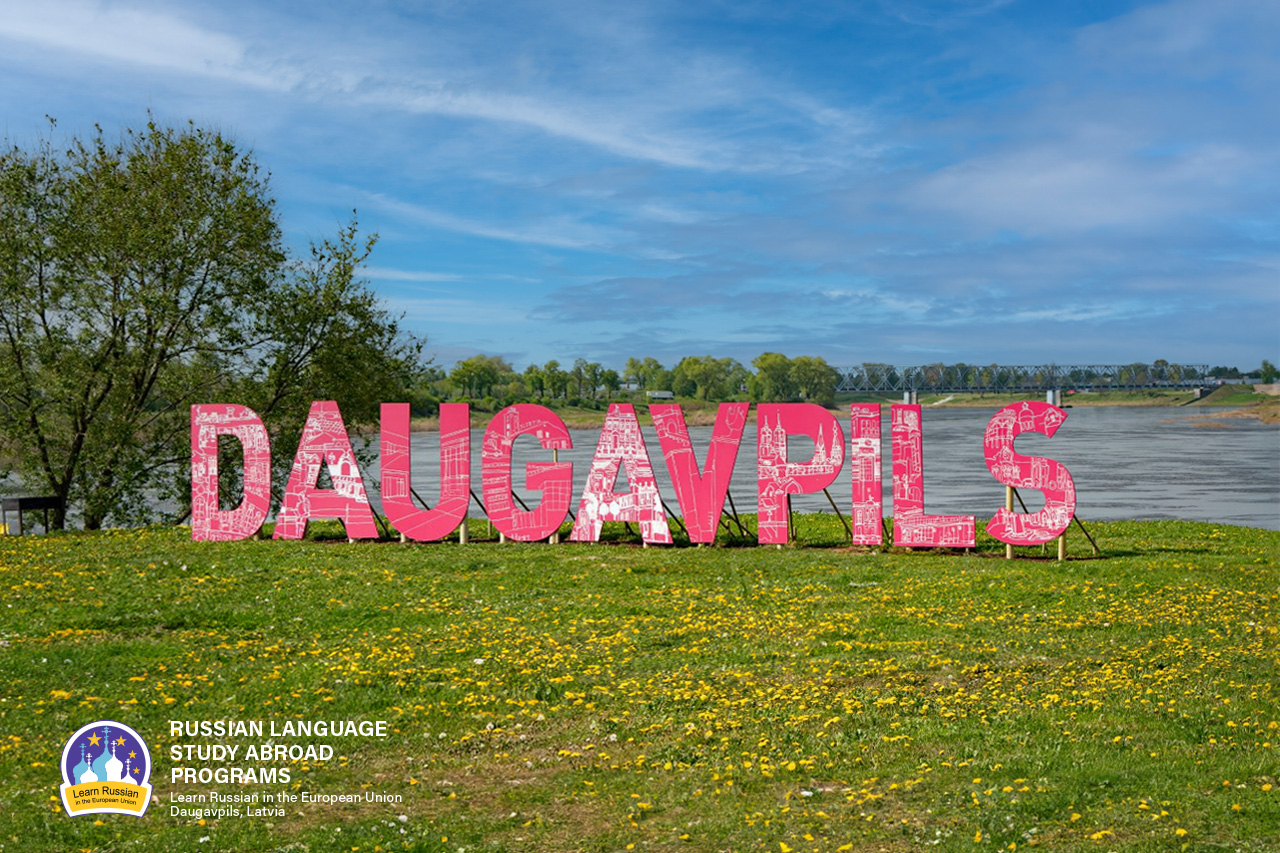
Why do people speak Russian in Daugavpils?
As it seems to us, Daugavpils is the best place to learn Russian now, because our city is situated in the EU and NATO, but at the same time 90% of the city’s population speak Russian at home.
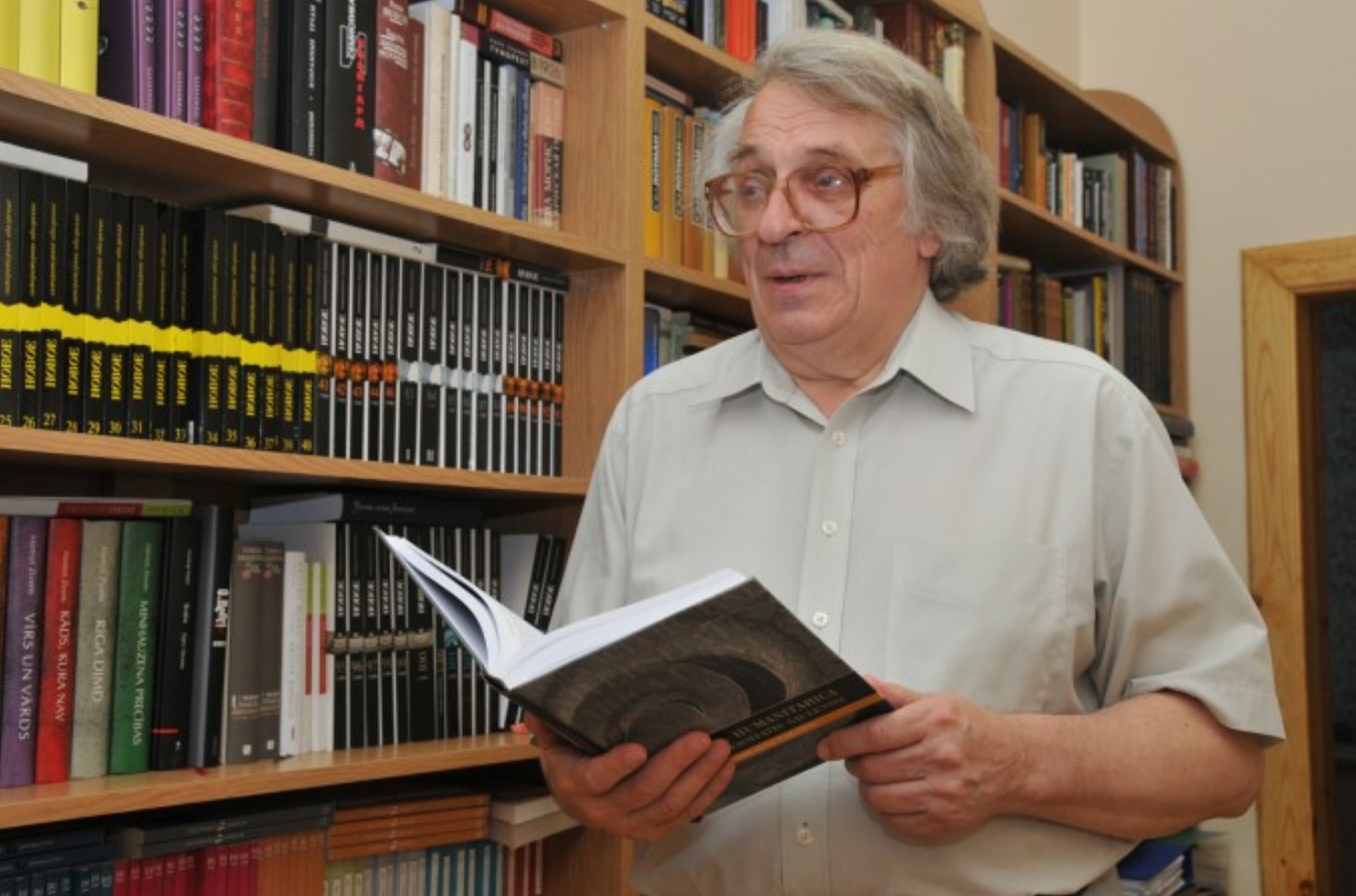
ЭТЮД О ДВИНСКЕ
Etude on Dvinsk by F.Fedorov
The Baltic region is one of the most catastrophe prone regions of the 2nd millennium, especially its second part; it is the centre of attraction of ‘geopolitical’ interests of the European world. Probably the most tragic fate has befallen to the eastern part of the present Latvia and its multi-titled town of Dinaburg – Dvinsk – Daugavpils. During its 730 years long history, the town went through five rather autonomous periods of development, five different lives (German, Polish, Russian, Latvian, Soviet), and at the beginning of the 1990s it entered into the 6th period.
The history of Dinaburg – Dvinsk – Daugavpils is the history of five attempts by the town to begin its life anew; and this is determined not only by the fact that the town was four times burned down and had to start life from scratch, but first and foremost because each of these periods was characterized by a total change of ethnos and the socio-cultural field.
The present article deals with the cultural space of the town in one of the most efficient periods of its development – from the 1860s till World War I.






